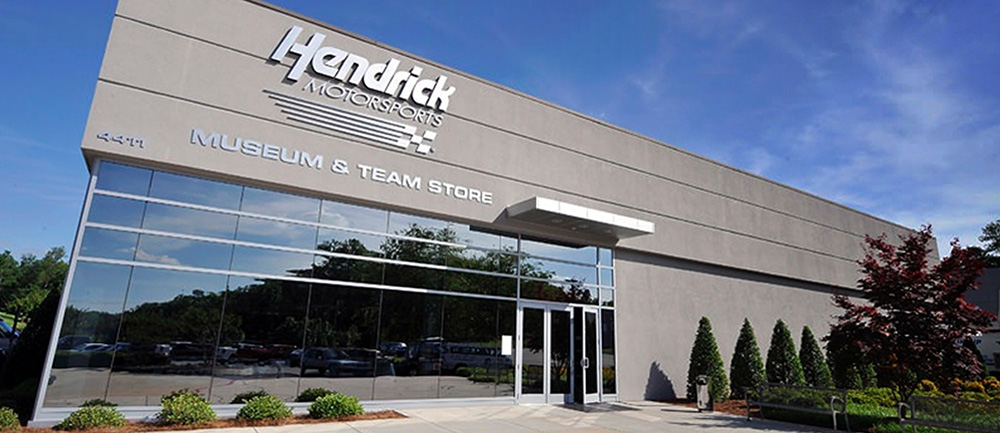
CONCORD, N.C. – At Hendrick Motorsports, science, technology, engineering and math are crucial to success on and off the track.
With that in mind, the organization started the Ignition 2 STEM initiative to focus on explaining how those four education disciplines are utilized in various Hendrick Motorsports careers.
This week marks National Engineers Week, and the purpose is to call attention to the contributions that engineers make to society.
So it seemed like a perfect time to introduce the race engineers for all four Hendrick Motorsports teams.
Following the No. 5 and No. 24 teams, please meet Cliff Daniels and Chais Eliason two of the race engineers on the No. 48 team.
CLIFF DANIELS
Race engineer for the No. 48 team
Where are you from and how did you begin at Hendrick Motorsports?
I am from Smithfield, Virginia. I landed this job through the Hendrick Motorsports and Stewart-Haas Racing relationship. I was the race engineer on the No. 14 car for Tony Stewart, and through communications with Chad Knaus, I came to Hendrick Motorsports in December 2014.
Where did you go to school?
I attended the University of North Carolina at Charlotte and earned a Mechanical Engineering degree while there.
How would you describe your job?
I help "make" speed. We work to do anything that we can to make the car go fast, mechanically or aerodynamically. I help coordinate and execute the efforts discussed. At the track, I work with Chad and Jimmie to tune the car for its best performance.
How does your job translate to success on the track?
At the shop, I help Chad develop and execute test plans to find better chassis and body combinations to tune for speed. At the track, I listen to feedback from Jimmie and Chad and provide options to help us tune the car.
How do you use STEM in your career?
I use science, technology, engineering and math every day. Whether we are lab testing, rig testing, or working on the car at the track, I have found many of the science and math courses I took while in school apply directly to my job.
What was your most important (or favorite) subject in school?
I always enjoyed trigonometry. I liked discovering new ways to measure and analyze shapes, angles, and dimensions of objects.
Do you have any advice for kids who might want to get into racing to follow in your footsteps?
While you're in school, math and science may seem like a waste of time because you aren't sure how it applies to a cool job. Trust me, through college and through an engineering program, it's cool to see how they directly apply and help solve real world problems.
What was your first job that relates to your current position?
I grew up driving racecars myself, and knew that I would be interested in a job in racing that revolved around finding speed and making the cars go faster. After going to school for engineering, I worked as a race engineer for a NASCAR XFINITY team and have been following my passion ever since.
CHAIS ELIASON
Race engineer the No. 48 team
Where are you from and how did you begin at Hendrick Motorsports?
I was born and raised in Duluth, Minnesota.
I interned with the organization for 15 months, beginning in March 2012. Following my internship, I went back to school in Michigan to finish my degree and received a call shortly after about a race engineer position for the No. 48 team.
Where did you go to school?
I went to Michigan Technological University and earned a Bachelor of Science in mechanical engineering.
How would you describe your job?
One of my main responsibilities as a race engineer is to keep track of any changes that we make to the racecar to make it go faster. I work alongside two other engineers to look at a lot of data, including driver comments to try and win the race. During the race and practices, I look at lap times and provide additional information to the other race engineers.
How does your job translate to success on the track?
The data analysis we engineers perform translates into changes in our chassis design, suspension geometry, race strategy and many other aspects to improve the chances of celebrating in Victory Lane each race weekend.
How do you use STEM in your career?
I use each one of these subjects every day in my career. Geometry is a subject that is used each day whether I'm designing a new part, calculating the angle of a part on a racecar, or determining the radius of a tire. Engineering and physics are used to gain a conceptual understanding of what the car is doing out on the track and to try and theorize how to improve the handling.
What was your most important (or favorite) subject in school?
My most important subject was math for sure. There isn't a day that goes by that I don't use math in some way. Math is the universal language for all engineering disciplines.
Do you have any advice for kids who might want to get into racing to follow in your footsteps?
Work hard. Don't ever give up on your dreams. If you're willing to work hard enough for something, anything is possible.
What was your first job that relates to your current position?
I first began working on racecars at the age of 12 at a local dirt track. My first actual racing job was for a Viper race team in Duluth, Minnesota when I was 18 years old.







